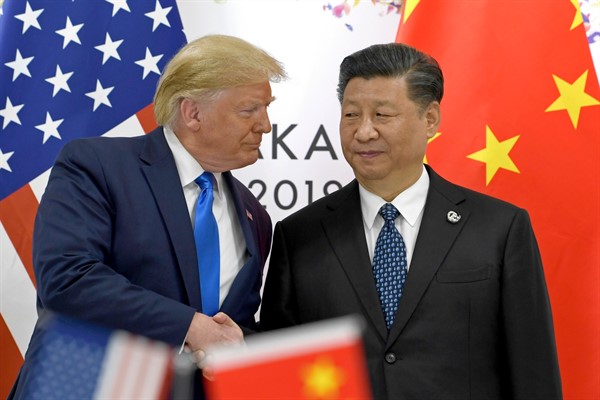The relationship between the United States and China has waxed and waned over the years, but it has felt more like a roller coaster ride under President Donald Trump. China-bashing was a centerpiece of his election campaign, yet once in office, Trump hailed his first meeting with Chinese President Xi Jinping, at Trump’s Florida estate, Mar-a-Lago, saying they had “great chemistry.” More than two years later, after Trump had launched his damaging trade war with China and with no deal to resolve it in sight, Trump called Xi an enemy and “ordered” American firms to leave China. By January of this year, Xi was back to being a “very, very good friend” as Trump finally signed his heavily hyped “phase-one” trade agreement.
Just three months after celebrating that deal, Trump’s rapport with Xi—and the agreement itself—is looking more fragile than ever. In the midst of a troubled reelection campaign, the president is casting about for someone to blame for the pandemic that has already killed more than 56,000 Americans and sent the economy into free fall. The administration has at times referred to the “China virus” or the “Wuhan virus,” but Trump in recent days focused his ire more on failures at the World Health Organization than directly at Beijing. But if China is unable to deliver on its commitments to import more from the U.S., which seems likely given the devastating economic impact of COVID-19, things could get nasty.
The Trump-Xi friendship was always odd. On the campaign trail in 2016, Trump said that China had committed “the greatest theft in the history of the world,” and that “we can’t continue to allow China to rape our country.” When he got to the White House, he appointed Robert Lighthizer and Peter Navarro, two noted China trade hawks, as U.S. trade representative and special White House adviser, respectively.

